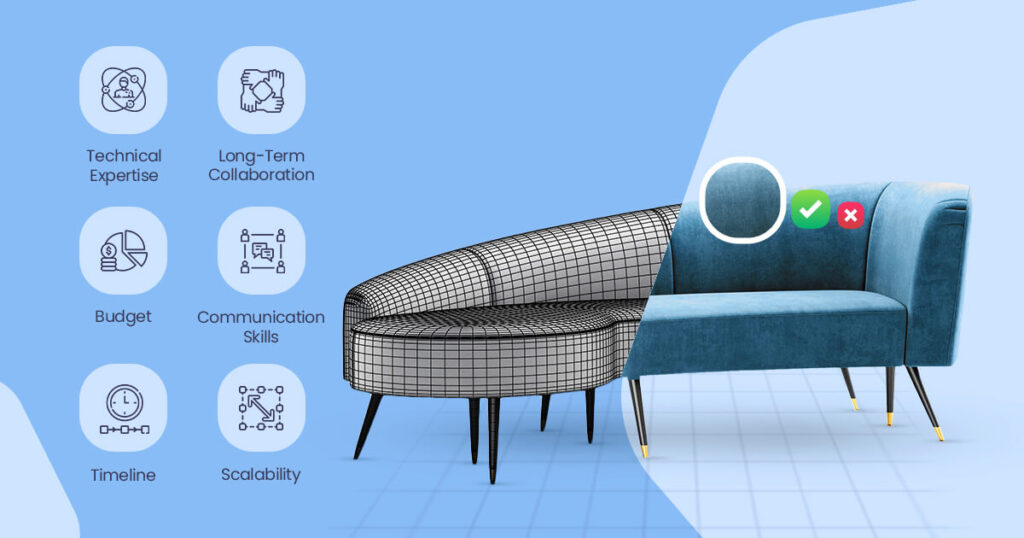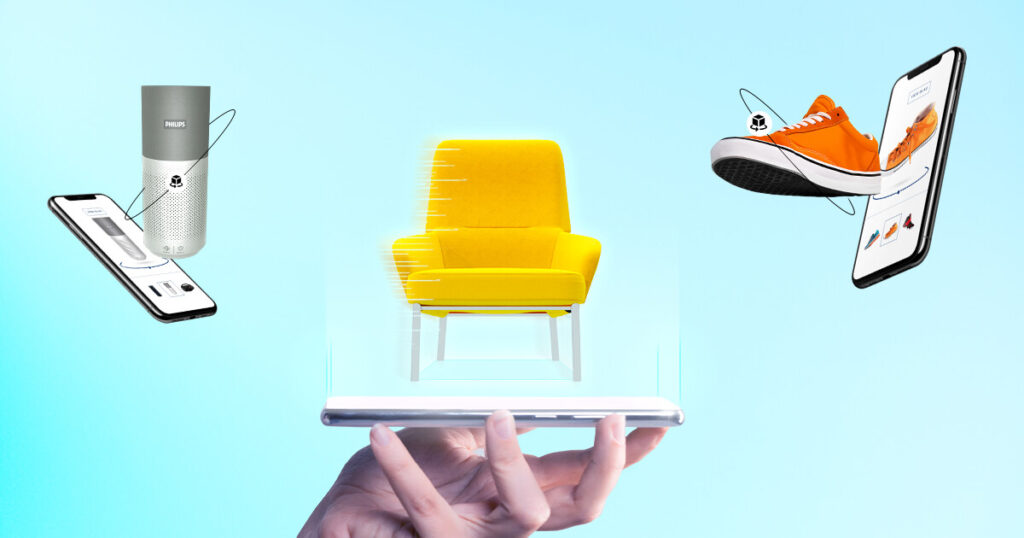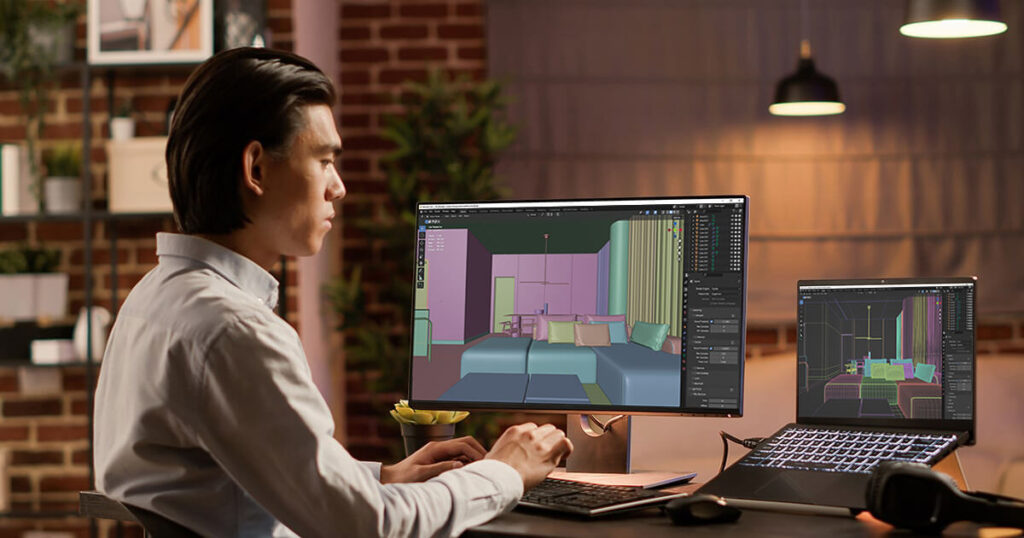The furniture market is no longer just about old traditions and retail shops’ craftsmanship. It’s undergoing huge changes caused by technological advancements, forcing brands to either embrace changes or watch their competitors take over their businesses. The most notable technology that is changing this domain is 3D modeling and rendering.
The furniture market today is more than just quality products to stand out. It needs a strong brand identity, engaging stories, and knowing the customers very well. One of the major factors that helps in attaining all these is innovation, either in design, materials, or marketing strategies.
3D modelling and rendering have changed furniture brands’ methods of product design, marketing, and selling. They create virtual worlds where designers experiment with multiple shapes, materials, and finishes, hence designing unique pieces that look good visually.
Current Trends in the Furniture Market
There has been much change in the furniture market because of changing buying habits, new technologies being introduced, and increased concern for ecology.
Consumer behavior and Preferences Understanding
Those who purchase goods nowadays are pickier than ever. The customers require furniture which would not only serve its purpose but also appeal to the eye, provide comfort and match their character. Besides, there is an increased demand for customization, whereby customers want personalized pieces tailored to suit them.
The Growth of E-commerce and Digital Platforms
The internet has completely changed shopping patterns for many people, including those in the furniture market. E-commerce websites have become very popular as they give customers a wide variety of goods, an easy buying experience, as well as often reasonable pricing. And because of this transition, regular traders had to re-formulate their businesses towards e-trading segments.
Sustainability and Ecologically Friendly Methods
Most customers are preoccupied with environmental issues when buying any products online or offline. Eco-friendly materials and ethical manufacturing processes are ways in which more people are increasingly looking for green furniture. Therefore, by being able to show that they care about what happens to our world, brands may enhance their chances of winning attention from those consumers who prefer them.
Furniture Design where 3D Modeling plays a significant role
Definition and Advantages of 3D Modeling
The above statement about 3D modeling, which is also known as 3D rendering, indicates that it would involve the development of a digital prototype for a product so as to allow product designers to view it before it is created. There are many advantages to using 3D modeling in the furniture market, such as reduction in design time, minimization of errors, and enhanced communication with customers. Accurate dimensions and realistic images are essential when making changes to the design since this helps in reducing expensive mistakes.
How 3D Modeling Enhances Creativity and Design Accuracy
Traditional methods stop designers from experimenting with shapes, materials, and finishes, but 3D modeling allows them to do so freely. This kind of freedom is a great source of imagination, and it also enhances the accuracy of everything made by giving possibilities for instant rectification. In the world of the furniture market, brands are able to test out many different designs in a very short time, ensuring that what eventually comes out into the market matches what customers want and demand.
Examples of Successful Cases in 3D Modelling Implementation
Countless leading furniture brands have successfully implemented 3D modeling to transform their design process. Thus, IKEA employs 3D models to present products within customers’ homes using AR, improving the shopping experience and increasing sales.
Benefits of 3D Rendering for Brand Growth
Generation of Lifelike Visuals for Business Promotion
3D rendering enables furniture brands to form hyper-realistic visual representations for their products where they can exemplify such complex details as texture, illumination, and substance. This sorts of graphical images are crucial during advertisement missions since they allow firms to demonstrate products in various environments, shades, and designs without having physical models created. Thus financial resources are saved while fast-tracking the getting them to market aspect, hence giving these businesses an advantage over others that deal in furniture within fast-paced settings.
Rise in Customer Involvement and Experience
By making use of 3D rendering technology, customers get the chance to view products from all angles, leading to a more realistic shopping experience. Also, by integrating interactive 360-degree perspectives with augmented reality capabilities, the furniture market can help customers imagine how their items will look when placed at home, consequently ensuring improved customer interaction that enables well-informed purchasing decisions, hence decreased return rates and increased brand loyalty, which are key drivers of growth within this sector.
Better Collaboration among Designers Manufacturers and Retailers
3D rendering promotes smoother communication through all production stages from design through manufacturing and sale stages within one production process where designers can share their laid-back views with producers, thus ensuring correctness and for sellers receiving first-rate 3D models.
Conclusion
The furniture market has undergone a massive change due to 3D modeling and rendering, which provide brands with tools that improve design accuracy, creativity, and customer involvement. Such technologies allow for realistic visualizations and interactive experiences, which not only hasten the design process but also enhance marketing effectiveness as well as customer satisfaction.
In an effort to remain at the forefront of technology, the furniture market has seen a growth in 3D modeling and rendering uses. As we look to the future, we see that innovations like real-time rendering, AI-powered designers, or more immersive AR experiences will emerge. This means that companies that follow these trends will manage to survive in a world where everything seems to be changing every second.
This emphasizes why any furniture company aspiring for sustainable growth should embrace 3D modeling and rendering. By embracing such technologies, brands can enhance their designing processes over time, make good communication with customers all through their products’ life cycles, and anticipate changes in market trends early enough. To remain successful in the future furniture business environment demands making use of modern technological innovations so as to adjust to changing consumer needs accordingly, leading to profitability on a long-term basis.
FAQ:
Why is furniture marketing dependent on 3D rendering?
Furniture marketing relies heavily on three-dimensional imaging since this technique fosters original imagery, intensifies shop item attractiveness, and permits clients to investigate intricate patterns. This approach raises the clientele’s degree of involvement, conviction, and revenue through engaging engagements.
How do sales of furniture become pushed by 3D visualization?
The 3D visualization enhances the selling of furniture through detailed, realistic product images, which enable customers to see all sides of the furniture. This engaging experience instills trust in the buying decision, thus increasing involvement and the number of sales.
Can a customer’s experience purchasing furniture be improved by 3D modelling?
For that reason, customers who purchase furniture have a better experience in purchasing it because 3D modeling allows them to see meaningful details about products, adjust the designs according to their preferences, and look for ways to put the items in their spaces, thus making sure that they make decisions for the right products.
What benefits come with employing 3D models in furniture advertisements?
By deploying 3D models in furniture ads, it brings about realistic appearance, customization choices, and good cost effectiveness as there might not be a need for taking pictures. This increases the ability to transition between platforms, create 360-degree immersive views, and improve update speeds, which increases customer’s involvement and the sale rate.
What are the ways that AR and 3D modeling can expand furniture brands?
Customer satisfaction is boosted together with sales growth, hence increasing the returns, thereby enhancing product customization for high engagement in virtual showrooms. AR and 3D modeling are furniture brands that expand the shopping experience.





